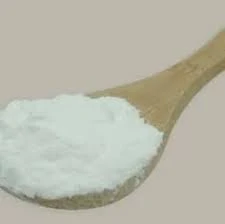PFAS Removal from Water Challenges and Innovations
Per- and polyfluoroalkyl substances (PFAS) have garnered significant attention in recent years due to their widespread presence in the environment and potential health risks. These synthetic chemicals, often referred to as “forever chemicals” due to their persistence in the environment and human body, have been linked to various health issues, including cancer, immune system dysfunction, and hormone disruption. As their prevalence in water sources raises concerns for public health and safety, effective PFAS removal methods are urgently needed.
PFAS compounds are commonly found in a variety of consumer products, such as non-stick cookware, water-repellent clothing, and firefighting foams. Their unique chemical structure, characterized by long carbon-fluorine chains, makes them highly resistant to degradation. Consequently, traditional water treatment methods often fall short in addressing PFAS contamination. As a result, novel approaches for PFAS removal have become a focal point of research and innovation in water treatment technologies.
PFAS Removal from Water Challenges and Innovations
Another promising technique for PFAS removal is ion exchange. Ion exchange resins can selectively capture PFAS from water, providing an effective means of reducing concentrations. This method shows great potential, especially for short-chain PFAS, which are often more challenging to remove through traditional methods. Despite its advantages, ion exchange systems also require regular maintenance and resin replacement, leading to additional costs and considerations for waste management.
pfas removal from water

Advanced oxidation processes (AOPs), which involve the generation of highly reactive hydroxyl radicals, are being investigated for their ability to degrade PFAS in water. AOPs can break down complex PFAS compounds into smaller, less harmful substances. However, these techniques can be energy-intensive and may require specific operational conditions to be effective. The scalability and economic feasibility of AOPs remain key challenges that researchers are striving to overcome.
Membrane filtration technologies, such as reverse osmosis (RO) and nanofiltration, have also gained traction in the fight against PFAS contamination. These methods utilize semi-permeable membranes to separate PFAS from water based on molecular size and charge. While RO has demonstrated excellent removal rates for a wide range of PFAS, the process can be expensive and may produce concentrated waste streams that require further treatment.
Emerging technologies, including electrochemical oxidation and photolytic degradation, are being explored as potential solutions to PFAS removal. These methods leverage electrical current or light to degrade PFAS compounds, showing promise in laboratory settings. However, more research is needed to evaluate their effectiveness and practicality for large-scale water treatment.
In light of the ongoing challenges associated with PFAS removal, policymakers and industry stakeholders are increasingly recognizing the importance of developing comprehensive frameworks for managing PFAS contamination. Regulatory measures, such as setting limits on PFAS concentrations in drinking water, will encourage investment in innovative treatment technologies. Moreover, public awareness and community engagement are vital components of addressing PFAS-related concerns, as local initiatives can drive better management practices and environmental stewardship.
In conclusion, the removal of PFAS from water remains a complex and multifaceted challenge. While existing methods such as activated carbon adsorption, ion exchange, and membrane filtration show promise, continued research and innovation are essential to develop more effective, sustainable, and cost-efficient solutions. By embracing a collaborative approach involving scientists, policymakers, and communities, we can work towards safer water resources and a healthier future.

